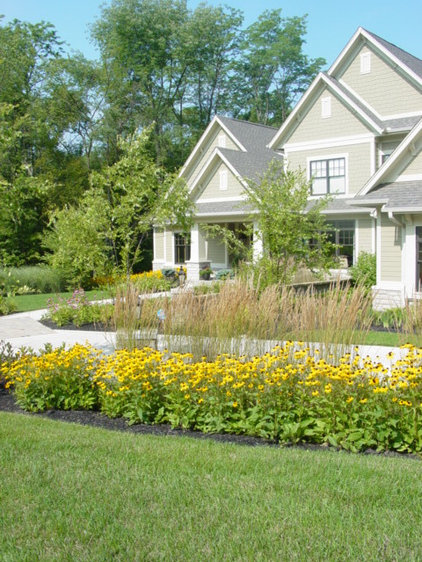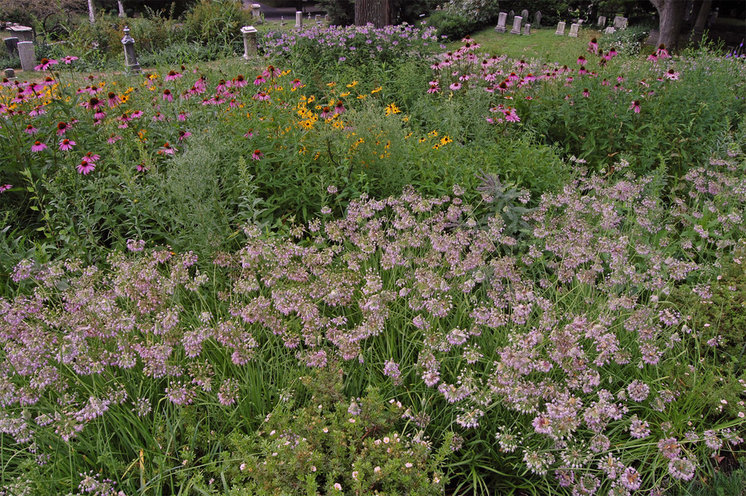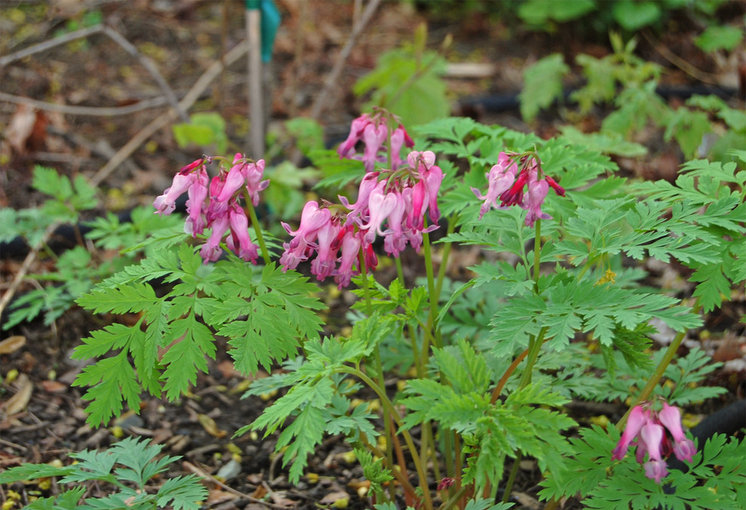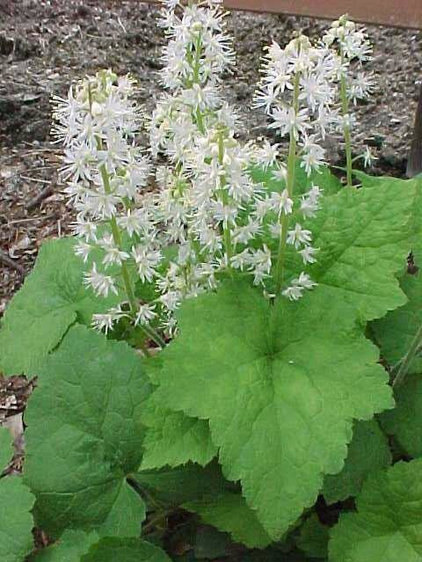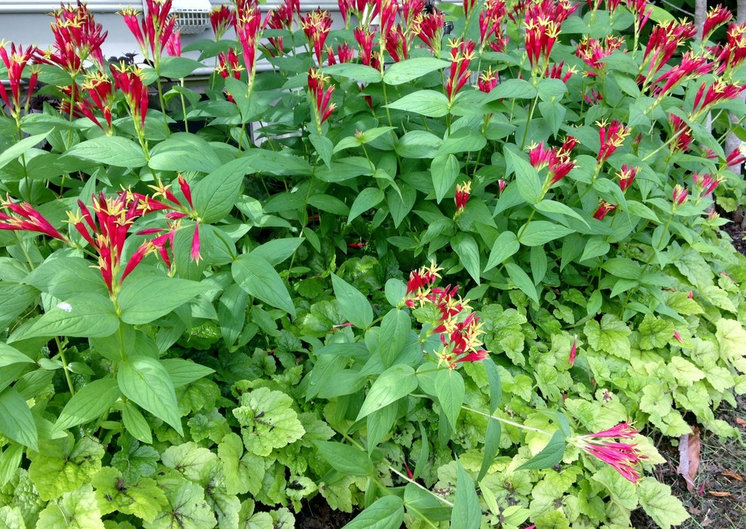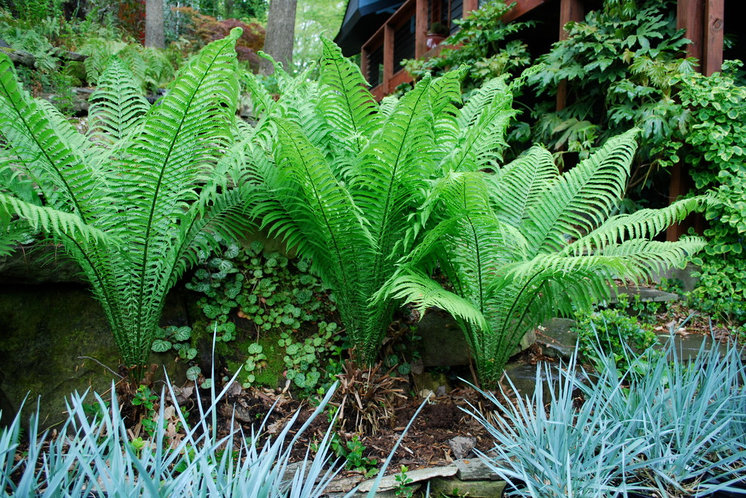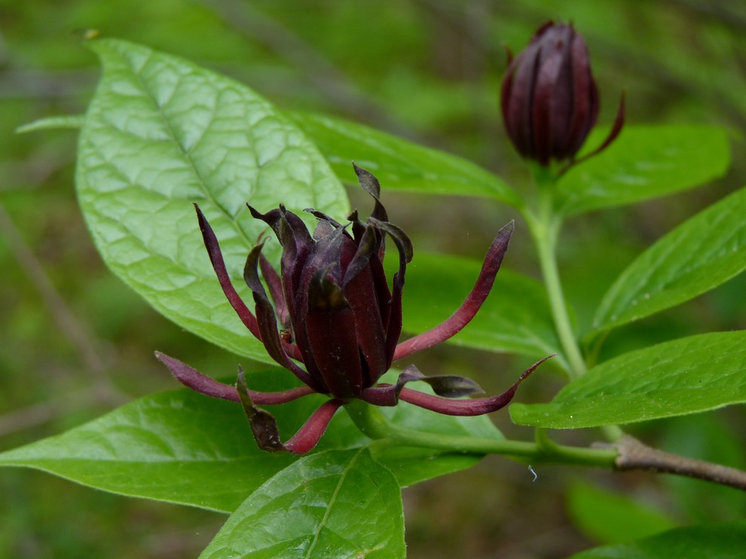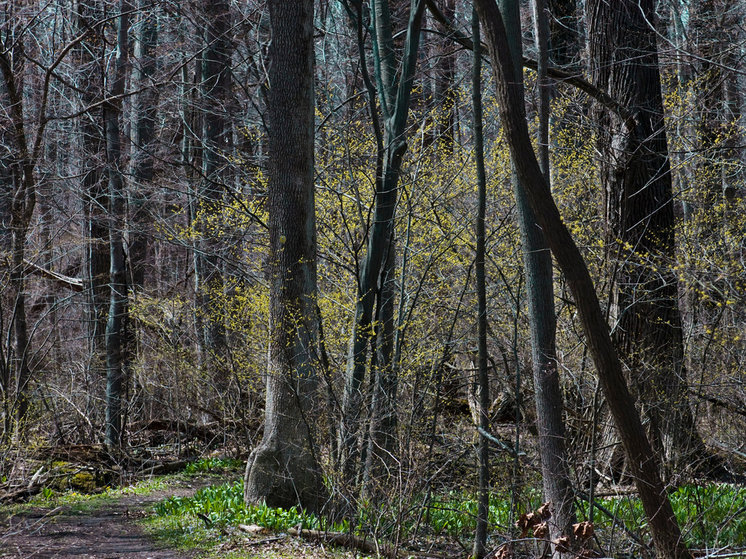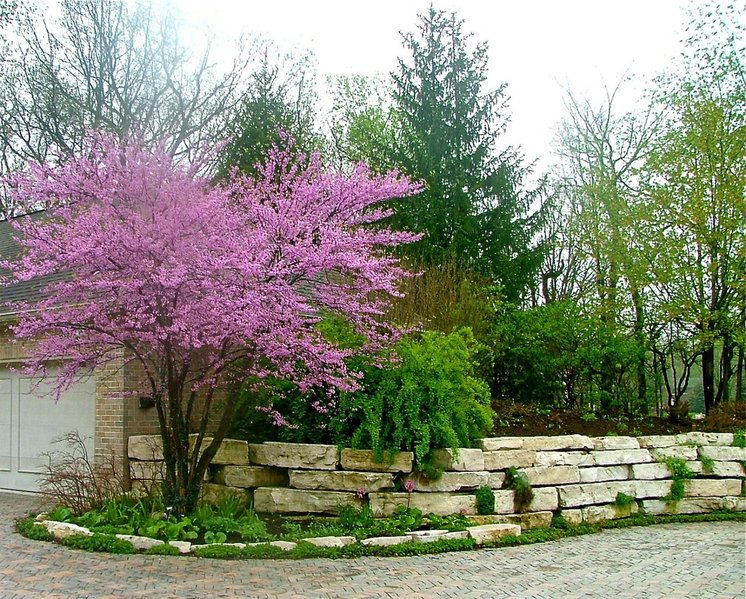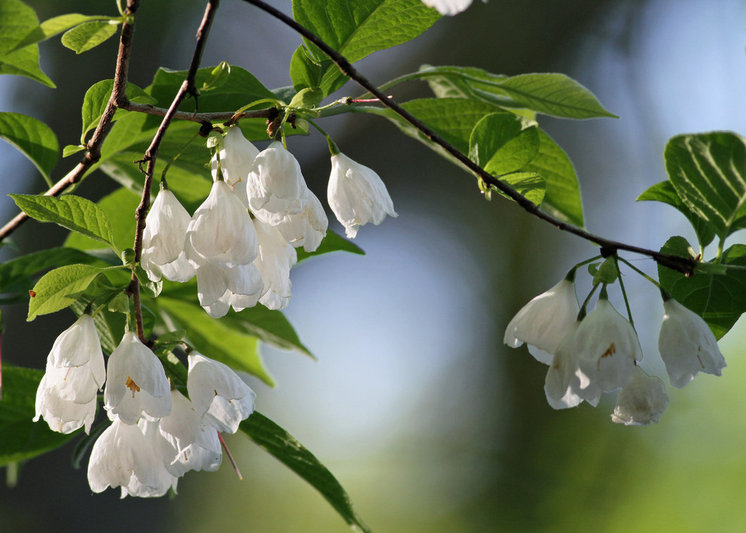(Rudbeckia hirta)Compared with the more commonly sold yellow coneflowers, such as Rudbeckia fulgida ‘Goldsturm’, black-eyed Susans have a looser, more natural form. I like this species’ exceptionally long bloom time, typically from mid-June into October. It is short-lived, but sets a lot of seed. It tolerates a variety of soil types, including clay, and grows well in full to part sun.
Black-eyed Susans work well in borders, as shown. At 1 to 3 feet tall, the plant also mixes well with taller plants. In an established shrub bed, its tendency to reseed will result in it finding and filling in the gaps. This is a great choice for a naturalistic or cottage garden, but maybe not for a formal planting.
The flower of the species has a dark dome-shaped center surrounded by bright yellow to golden petals. A number of cultivars have fancier coloration in shades of orange, red and brown. Gloriosa daisies are cultivars of the species that have twice the number of chromosomes (tetraploid) and feature larger flowers in multiple warm hues. The cultivars are commercially available as plants or seed. To get the species plants, you will probably have to start from seed, but this is a very easy plant to grow from seed, either indoors or directly in the garden. It usually will bloom the first season, though later in the summer.
(Allium cernuum)
Native from New York south to the cooler regions of Georgia and west to British Columbia and ArizonaNodding onion is a tough native bulb that prefers sunny, dry conditions. As the name suggests, the pinkish midsummer flowers bend over at the ends of their stalks. I like to use them in a border. Since plants reproduce by producing bulb offsets, a few plants can develop into a dense planting after a few years. It can be used as a ground cover or accent plant for sunny dry sites.
As with many onion species, these tend to be deer- and pest-resistant. The midsummer blooms attract bees and hummingbirds.
(Dicentra eximia)
Native from New Jersey and West Virginia south to Virginia and Tennessee, mostly in the Appalachian Mountains; has been found growing wild from Vermont to Georgia and west to IllinoisThis is a true mid-Atlantic native, with the center of its native range in the mountains of Virginia and West Virginia. It is a great ground cover plant for shady woodlands and borders and, once established, it can handle drier soils. I have even had success growing this under a Norway maple (Acer platanoides), which is really the epitome of dry shade.
It features soft, fern-like foliage and pink heart-shaped flowers that burst forth in mid spring. Blooming can continue through the summer under ideal conditions. Bees and hummingbirds pollinate the flowers, and deer and rabbits tend to leave this plant alone.
(Tiarella cordifolia)
Native from New Brunswick in Canada, south to Georgia and west to MichiganThis evergreen, or nearly evergreen, ground cover has prolific white blooms in spring and interesting foliage for most of the year. In most nurseries you can find a number of cultivars with different patterns and color shades on the leaves. You can enjoy that foliage most of the season, since deer and rabbits tend not to feed on it.
Growing less than a foot tall, foamflower is a perfect plant to use along a path or as a ground cover among larger perennials and shrubs. Plant in partial sun to shade in average-moisture soils.
(Spigelia marilandica)
Native to woodland edges and shaded woods of the southeastern U.S., from Maryland south to Florida and west to TexasIt’s hard to miss the bright red and yellow flowers of this shade tolerant perennial. They look like miniature hummingbird feeders, which in fact, they are. Hummingbirds are the primary pollinator of this plant.
Plant in small clumps. They can also work planted in a large mass, forming a 1- to 2-foot tall ground cover in a shady garden or bed. Plant in partial sun to shade in average to moist soils. This used to be a difficult plant to find for sale, but production has ramped up and it is becoming more available.
(Matteuccia struthiopteris)
Native in the Northern United States and Europe, China and JapanThe finely divided foliage and dense cover of this fern make me feel cooler just from looking at it. There are many beautiful ferns but ostrich fern stands out with its strong architectural form. Many ferns have a mass of fronds that form a sea of green, but ostrich fern has a strong clumping tendency and maintains a vase-like shape. Growing to 3 to 5 feet tall, this plant makes a strong statement in a shady garden.
The fronds begin dying back in the fall and the plant can look a little ratty, however the dark brown fertile fronds remain intact through the winter and can add interest to an otherwise empty space.
Its native range is in the northern quarter of the U.S. but performs well in the mid-Atlantic. It likes shady, moist conditions and will tolerate clay soils. Like most ferns, it is deer resistant. In the spring new foliage appears first as fiddleheads. These are amazing to look at. Many people harvest them and enjoy eating them — after cooking — for their asparagus-like taste.
(Calycanthus floridus)
Native from southeast Pennsylvania to southeast Kentucky south to northern Florida and LouisiannaEastern sweetshrub is a native of the Southeast, with a range that extends to southern New England. What is remarkable about this plant is the exotic 3-inch blooms that decorate it in mid to late spring. It’s an understatement to say they smell sweet; I liken the scent to tutti-fruity. Once, when I got a little disoriented on a walk, I picked up the sweet scent wafting through the woods and I knew I was close to home.
Its glossy, medium green leaves form a dense hedge that might be used to enclose a shady patio. Suckers need to be pruned out if you want to keep it compact. You are treated to another scent when cutting out branches: the aroma of camphor. This may be why deer avoid browsing on this plant.
It needs protection from full afternoon sun and prefers evenly moist soil. It is also a good shrub choice if you have clay soils.
(Lindera benzoin)
Native from Southern Maine to northern Florida and west to Missouri and LouisianaSpicebush is an understory shrub, native to the eastern U.S., with high wildlife value. It produces attractive yellow blooms in early spring. Caterpillars of several butterfly species, particularly the spicebush swallowtail, feed on its leaves. Bright red berries that are favored by several species of birds ripen in late summer. The seeds can be used as a flavoring similar to allspice. Consider this a native alternative to forsythia — with benefits.
You can recognize spicebush in the woods by the citrusy scent of the leaves or stems when crushed. It naturally grows in the understory of moist woodlands, but it will adapt to sunnier sites, given sufficient moisture. Spicebush is resistant to salt and tolerates clay soils.
(Cercis canadensis)
Native from the Plains east to southern New England and south to FloridaIt’s easy to pick out eastern redbud in early spring. The magenta flowers that line the branches are unlike anything else in the forest understory. It can be used in many ways in the landscape. I’ve seen it used in an allée, with pink blooms lining the path in early spring and heavy shade through the summer. It can also be scattered like exclamation points in a few locations throughout the garden.
Eastern redbud prefers full sun to part shade in average to moist soils. As a member of the legume family, it has the ability to fix nitrogen from the air, giving it a boost in infertile or depleted soils. It can also tolerate clay soils.
In addition to the species, there are many named cultivars, including red-leafed ‘Forest Pansy’ and yellow-leafed ‘The Rising Sun’ forms and a small weeping cultivar named ‘Covey’, for small gardens. There are some problems with hardiness of cultivated plants in colder climates. You should consider the climate that the plants originated from if this is an issue. The cultivar ‘Northern Strain’ comes from Minnesota and is reported to be more cold hardy than others. The variety texensis is more drought-resistant and suited to warmer climates.
(Halesia tetraptera)
Native from southern West Virginia to Mississippi and northern FloridaThis is another southeastern plant whose native range extends into Virginia and West Virginia. It is hardy enough to grow well up into southern New England. This small to medium-size tree can be grown in sun as well as shade in average to moist soils.
The dangling white blooms appear on outstretched branches before the leaves come out, about the same time as the eastern redbuds. The flowers are a good food source for honey bees, and both bees and butterflies pollinate them. Caterpillars, such as of promethea moths, consume the leaves. Squirrels are known to feed on the seeds in the fall.
The form of this tree is variable, ranging from a single trunked tree to a multistemmed shrub. It is particularly good at stabilizing slopes, which are its native habitat.
There are, of course, hundreds of wonderful plants to choose from. To make your own choices for plants suitable to your local conditions, take a look at selection guides tailored to your region. Some examples include: Native Plants for Wildlife and Conservation Landscaping: Chesapeake Bay Watershed (my favorite for use in Maryland), the plant selection database at The Wildflower Center, Northern Virginia Native Plants guide and Landscaping With Native Plants in Pennsylvania.

